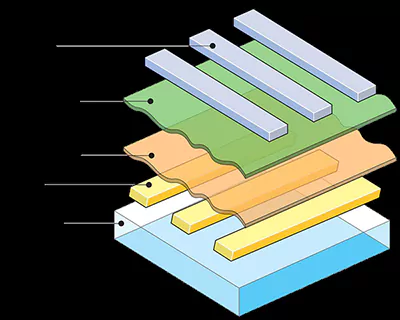
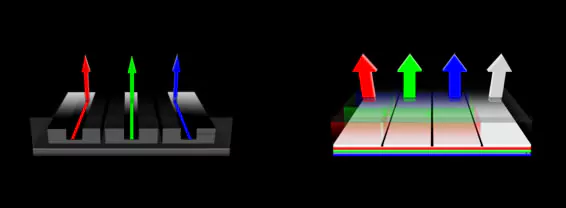
OLED Technology
Using organic light emitting diodes, OLED technology includes many independent organic light emitting diodes, which are a source of light flux independently of each other. Now the TV is turned on, it is a large screen consisting of many miniature diodes that create an unsurpassed high-quality image. High contrast, impeccable black color, realistic colors and delicate matrix design are the direct attributes of the modern OLED screen.
Features
Organic light-emitting diode (OLED) is a semiconductor element made of organic compounds that is able to emit light when passing through it. (Organic compounds, organic substances are substances that are related to hydrocarbons or their derivatives, that is, a class of chemical compounds that brings together almost all the chemical compounds that comprise carbon (except carbides, carbonic acid, carbonates, some carbon monoxides, rhodonites, cyanides).
How it works
OLEDs use thin-film multilayer structures consisting of different types of polymers. When the voltage is applied through the LED from the cathode to the anode, the flow of electrons begins to move, thus the cathode gives electrons to the emission layer, and the anode picks up electrons from the conductive layer. That is, the emission layer receives a negative charge, and the conductive layer is positive or in other words, the anode gives holes in the conductive layer. And under the action of electrostatic forces, electrons and holes move toward each other and recombine when they meet. This is closer to the cathode because in organic semiconductors, holes are more mobile than electrons. During recombination, electrons lose energy, which is converted into light by photons. Each layer of the structure has a thickness that is approximately 200 times thinner than a human hair in size.
Materials and technologies
OLED materials are divided into micromolecular ("small molecule" OLED) and polymers (Polymer Light Emitting Diodes - PLED) or their hybrids. The main difference in the production of LEDs is the method of applying light-emitting crystals to the substrate. SM-OLED are manufactured by vacuum spraying, PLED by inkjet printing (simpler and cheaper technology).
The anode material typically uses tin-doped indium oxide. It is transparent to visible light and has a high output that facilitates the injection of holes into the polymer layer. The cathode is often made of metals such as aluminum and calcium because they have a low output, facilitating the injection of electrons into the polymer layer.
Background of the invention and implementation
French scientist André Bernanose and his staff discovered electroluminescence in organic materials in the early 1950s, applying high-voltage alternating currents to transparent thin films of fluorescent dyes (acridine orange and quinacrine).
In 1960, researchers at Dow Chemical developed AC-controlled electroluminescent cells using doped anthracene.
In 1963, in a number of articles, scientists reported that they observed high conductivity in doped (the deliberate introduction of impurities into a highly purified semiconductor to modulate its electrical properties) with iodine polypyrrole.
In 1974, the biostability properties of a high-conductivity melanin-based switch were investigated. This material emitted a flash when turned on.
In 1977, another group consisting of American chemical scientists Alan Higer and Alan McDiarmid and Japanese chemical scientist Hideki Shirakawa reported high conductivity in similarly oxidized and iodized polyacetylene. And in 2000, they received the Nobel Prize in Chemistry for "the discovery and research of conducting organic polymers." There were no references to earlier discoveries.
The first micromolecule-based diode devices were created in the 1980s at Eastman Kodak by American chemical scientists Dan Qingyun and Steven van Slyke. For the invention of OLED in 2014, scientists were shortlisted for the 2014 Nobel Prize winners in chemistry.
The first light-emitting polymer, polyphenylenevinyl (Poly (p-phenylene vinylene)), was synthesized at the University of Cambridge's Cavendish Laboratory in 1989. In 1990, an article by scientists appeared in the journal Nature, which reported on polymers with green light and "very high efficiency." In 1992, Cambridge Display Technolodgy (CDT) was formed to produce polymeric light-emitting materials. Since then, two directions for the production of organic LEDs have emerged: micromolecules (sm-OLED) and polymers (P-OLED).
LG Electronics i technology OLED - a long way to disappointment and success
Usually, all modern technologies are implemented with instant delay and lightning speed. The example of the development and implementation of OLED-devices conceals revolutionary events that hide the difficult years of hard work of the day not only by a professional team of engineers of the company, but by a large number of scientists and leading experts from all over the world. It is thanks to this many years of work that they have been able to significantly change the situation in technological development as a result of which the end user receives a high-tech product of unsurpassed quality and rise to the top steps with regard to their competitors in the industry.
Faith, hard work and perseverance in the development of the latest innovations have always become a source of LG's development, and this can be proven once again by the introduction of OLED technology in television products.
1987: Development of OLED technology begins
It was first introduced in 1987 and was intended to be used as a digital camera camera screen. At that moment, no one could even imagine that this technology would open its new path in the field of television.
2004: OLED TV
It was during these years that most famous corporations in the world realized the potential of implementing OLED technology in home television. The active development and investment of own resources in the development and implementation of this technology at the production began. OLEDs had a relatively short life span and high cost at the beginning of their development. Despite all this, belief in the potential of this technology did everything necessary to further its development. Therefore, units were usually able to get a positive result. Many manufacturers have ceased their active efforts in this field and have tried to create and experiment with their own designs.
2009: LG launches its first OLED TV
The company announces plans to launch the commercial production and sale of the first mass-produced 15-inch OLED TV, which is successful thanks to its flat screen and aesthetically slim design. Thus, it becomes the first manufacturer in the world to be able to master OLED technology for mass production.
2012: Record OLED TV
A systematic improvement of technology is underway, and the first CES-2012 has been introduced to the first 55-inch OLED TV with a screen thickness of 4 mm. on TV.
2013: the new market leader
While other companies were studying or creating their own technology developments, LG remained calm and continued to work hard and invest in the technology. That is why in 2013, at the IFA-2013, LG introduced the world's first 77-inch 4K OLED TV, which quickly became a hit. This is how the success story of one of the best-selling products on the market began. 2015: New market trends
Despite the fact that many competitors do not believe in the success of OLED technology and are concerned about the high financial costs and lack of opportunity to return investment in this area, LG continues to work on this direction of a fundamentally new technology.
2017: LG is motivated by its active position in the market
Two years later, still oblivious to competitors' actions, the company was rewarded for its dedication and in 2017, began selling its OLED matrices to other manufacturers.
2018: Continuous development of technology
At the annual IFA-2018, the company unveiled its latest development - an 8K OLED 88-inch TV. It contains 33 million individual managed pixels.
2019: Infinity of possibilities and space
The company has announced the start of production and regular sale of 8K OLED 88-inch TVs. The novelty will become available for sale in markets virtually all over the world in a very short time.
This is how today revolutionary OLED technology continues to deliver its virtually limitless capabilities and makes what previously seemed impossible. Recall the launch of the world's first flexible roll-up TV series. This proved to be a real miracle for the world market and was made possible due to the peculiarities of matrices using OLED technology. In addition, there are a number of unique products with advanced functionality and purpose, such as TVs with a transparent matrix or specific curvature of the screen plane. LG, which owns the patent for the technology, is at the forefront of these revolutionary events. This is how the history of implementation of OLED technology clearly shows that innovation does not happen suddenly, and for the future to become a reality, it takes patience, perseverance and years of daily hard work.
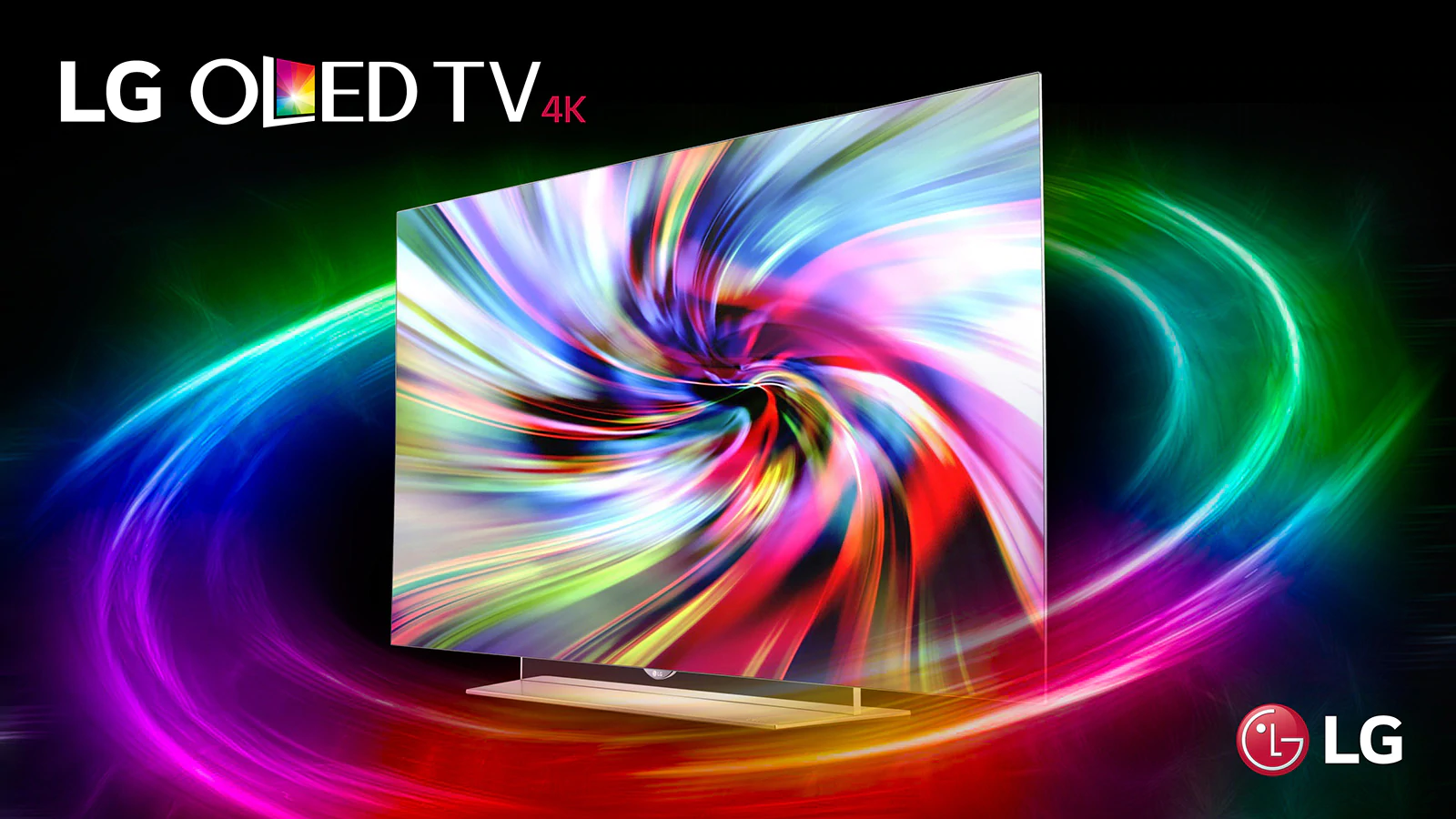

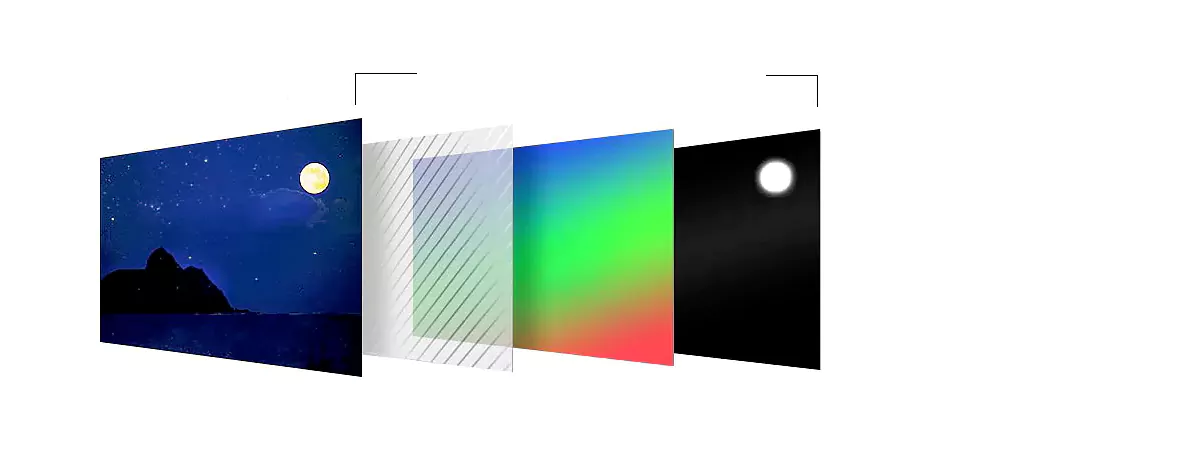
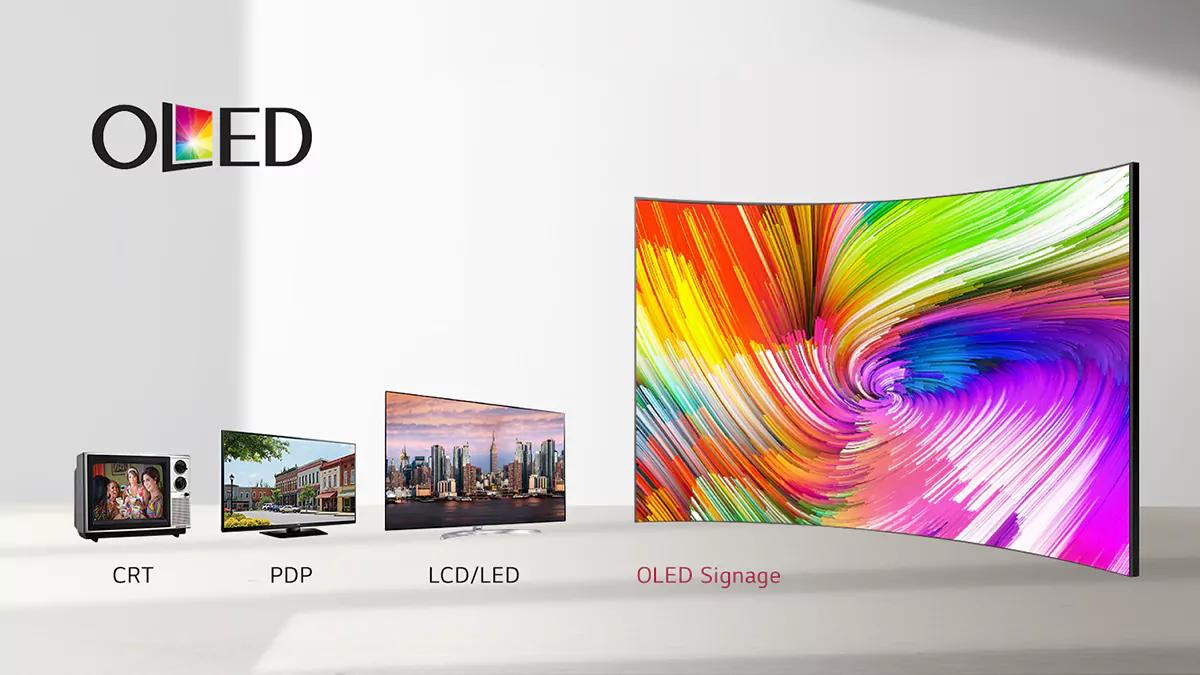
Cathode
Anode
Substrate
Emissive layer
Conductive layer
LCD/LED
OLED
96%
18.6 kg
11.1 kg
Thinner
The absence of the Backlight Block makes it possible to create matrices with unique physical properties:
- Transparent
- Сurved
- Ultrathin
Polarizer & Glass
OLED
Color Filter
40%
Easier
OLED matrices can be up to 0.2 mm thick
